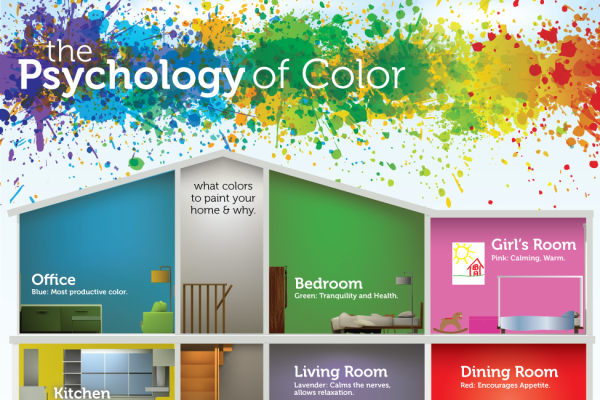Indulge In The Transformative Power Of Paint As We Decipher How Color Options Shape Your Feelings And State Of Mind In Unforeseen Ways
Indulge In The Transformative Power Of Paint As We Decipher How Color Options Shape Your Feelings And State Of Mind In Unforeseen Ways
Blog Article
Created By- Read Far more
When it comes to choosing paint colors for a space, the selections made prolong beyond mere aesthetics. The psychology of shade looks into just how different tones can influence our feelings and psychological well-being, forming the setting of a space in extensive methods. Comprehending the influence of shade on state of mind can result in willful and calculated layout decisions that cater to enhancing numerous elements of our day-to-days live. By discovering the intricate partnership in between color and psychology, one can uncover the refined yet effective methods which repaint selections influence our psychological experiences within a given environment.
The Impact of Shade on Emotions
Frequently, the shades we border ourselves with can significantly influence our emotion and total wellness. The impact of shade on emotions is a well-researched area within psychology and interior design.
Warm shades like red, orange, and yellow are recognized to evoke feelings of power, heat, and convenience. These hues can boost conversation and create a cozy atmosphere in an area.
In contrast, awesome colors such as blue, environment-friendly, and purple have a tendency to have a calming impact, advertising leisure and harmony. These shades are commonly preferred in rooms and offices to develop a sense of calmness.
Furthermore, the intensity and saturation of shades play a critical role in determining their psychological effect. Intense, dynamic colors can generate feelings of excitement and interest, while soft tones are a lot more soothing and gentle.
https://www.reviewjournal.com/entertainment/arts-culture/wait-is-that-real-the-story-behind-the-most-wildly-painted-house-in-las-vegas-2712828/ is very important to take into consideration the wanted psychological response when choosing paint shades for different spaces in your home or work space. By recognizing the psychology of color, you can develop settings that support your emotional well-being and enhance your overall mood.
Picking the Right Paint Color Styles
Recognizing the psychology of color and its influence on feelings can assist people in choosing the appropriate paint colors for their home. When choosing paint colors, it's vital to think about the state of mind you want to produce in each room.
For instance, soothing colors like blue and green are suitable for bed rooms and relaxation locations, as they advertise a sense of harmony. On the other hand, vivid shades like yellow or red can invigorate and boost conversation in social areas such as living rooms or eating areas.
In addition to the psychological impact, the dimension and illumination of a space need to also influence color choices. Lighter colors can make a small area feel more large, while darker tones can add warmth and coziness to bigger locations. Natural light enhances the method colors appear, so it's essential to examine paint samples in different lights conditions prior to making a decision.
Inevitably, selecting the right paint shades includes a thoughtful factor to consider of both emotional actions and practical elements to produce an unified and comfy living atmosphere.
Creating the Preferred Atmosphere
Achieving the desired ambience in a space entails a strategic mix of shade choices and lighting factors to consider. Shade plays a vital role in establishing the state of mind of a space. Cozy tones like reds, oranges, and yellows can develop a comfy and inviting atmosphere, ideal for areas where comfort is crucial, such as living areas or bed rooms.
On the other hand, trendy shades like blues and greens evoke a sense of calm and relaxation, making them ideal for areas where harmony is preferred, like washrooms or reflection areas.
In addition to color, lights is an additional essential factor in forming the ambiance of a room. Soft, warm illumination can enhance the heat of an area, while brilliant, trendy illumination can stimulate and uplift the state of mind. Dimmer switches or flexible lighting components supply versatility, permitting you to adapt the lighting to fit various activities or moods throughout the day.
Conclusion
In conclusion, the psychology of shade demonstrates the significant impact paint options can have on our state of mind and feelings within a space.
By recognizing how different shades evoke specific sensations and choosing paint colors appropriately, we can create atmospheres that promote energy, comfort, relaxation, or enjoyment.
Very carefully selecting the right colors can aid us to influence our emotional state and overall well-being in an offered space.
